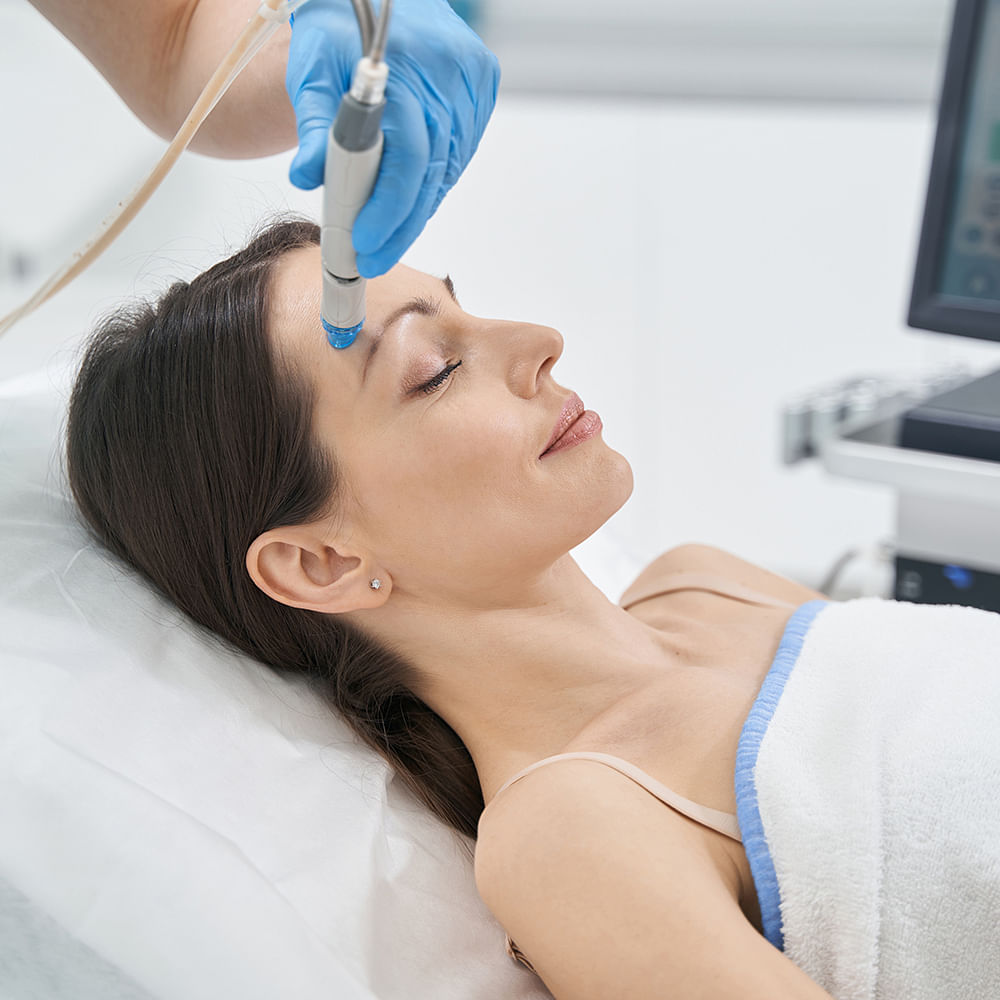The beauty industry never rests, there's always something new popping up and knocking on your door, waiting to be embraced. And the way things are progressing in beauty, with overwhelming things such as invasive treatments being a common practice now, its easy to feel lost about what products to buy or what treatments to go for. One extremely popular procedure is HydraFacial. We have heard about it, have seen dermatologists prescribe it and also watched people document their skin's transition, so much so that every other person on the Internet seems to be obsessing about it. We spoke to a dermatologist, Dr. Pranav Sharma and did our research, and here's what we know about the procedure.
HydraFacial Treatment: A Dermatologist Decodes the Much-Hyped Procedure
What is HydraFacial?
'A patented technology, HydraFacial is a proprietary device utilised to perform facials similar to microdermabrasion (which is a minimally invasive epidermal procedure used to treat uneven skin tone or scarring). The device uses an exfoliating tip paired with suction to remove dead skin cells from the surface of your face', says Dr. Sharma.
Unlike traditional dermabrasion, HydraFacial is a gentler approach that vacuums out the gunk from the pores while pushing in potent actives that moisturise, brighten, plump, and protect the skin. The wand that works like a vacuum to open pores for a deep cleaning and easy extraction of impurities, while also helping in deeper penetration of actives for the most effective treatment possible. This makes it a good option for immediate and visible effects on dull skin.
What Are The Steps?
Dr. Sharma says, 'There are three steps–cleanse and peel, extract and hydrate, and finally, infuse and protect'. Here's what happens in each of the steps according to him:
Cleanse and peel: The first step involves resurfacing wherein the skin is exfoliated using the HydraFacial tip. It is known to have beneficial effects on the skin, including leaving the skin brighter by removing the dead skin cells from the top-most layer of the skin and unclogging the pores by getting rid of the impurities.
Extract and hydrate: The device's tip gets the debris out of the pores and delivers moisturisers topically, which helps the skin barrier stay hydrated. This is painless and helps nourish the skin with antioxidants, peptides and hyaluronic acid.
Infuse and protect: The treatment is finished with serums or skin boosters for specific concerns like hyperpigmentation, fine lines and wrinkles, dull skin, or enlarged pores. This is a customisable step that is tailored according to the individual's skin's needs.
HydraFacial Benefits
Dr. Sharma says, 'A HydraFacial treatment can help your skin in a variety of ways. It has numerous advantages, including a more hydrated, bright, plump, and clear complexion. It can also help to reduce the indications of ageing. The treatment smoothens fine lines and wrinkles, promotes firmness, evens out tone, texture, and brown spots, and shrinks enlarged pores.' Other benefits that we spotted are:
Suitable for all skin types: HydraFacial will work for you whether you have sensitive, dry or oily skin, or acne.
Consistent results: Because HydraFacial technology controls so much of the procedure, you can achieve consistently high-quality results every time.
No downtime: Another advantage of HydraFacial is that there is no downtime. You can even use makeup on the same day if you choose, however, most people prefer not to hide the shine from the treatment.
Immediate results: Because the procedure is non-invasive, you will notice great benefits almost immediately. We even recommend it for a radiant, healthy glow before weddings or gatherings.
Risks Associated With HydraFacial
Dr. Sharma says, 'There are rare cases of allergic reactions. The treatment should be avoided if you have active rashes, sunburns or rosacea as there are chances of inflammation if the procedure is not carried out carefully.' Also, such treatments should be avoided during pregnancy as the skin is extremely sensitive at that time. Another thing to be careful of is to go in for the procedure after receiving proper guidance from your dermatologist and avoiding the risk of 'knock-off' HydraFacial so doing your research is a must and opting for a licensed clinic or skin specialist is non-negotiable.
Pre And Post Care
It is advised to discontinue use of exfoliating actives like retinol, glycolic acid, benzoyl peroxide, salicylic acid among others at least two days prior to the procedure. Also, avoid hair removal procedures such as threading, tweezing, waxing and laser in the treatment area. For post care, a broad-spectrum sunscreen with high SPF protection (SPF 30 is minimum) is recommended if you plan to step out within two to three days of the treatment.
FAQ's
What's special about HydraFacial in comparison to normal facials?
Most facials address very specific skin concerns, and some are too harsh for those who are sensitive in any way. The HydraFacial, on the other hand, is suitable for most, if not all, skin types. The likelihood of experiencing any negative side effects following treatment is extremely low.
How much does a HydraFacial cost?
In India, it can range from anywhere from INR 5,000 to INR 35,000 depending on the doctor and the clinic. As it is an investment, we would suggest getting your dermatologist's opinion before jumping on it.
How many times can I get a HydraFacial in a year?
It really depends on what your specialist suggests you, shouldn't be overdone as too many procedures can cause skin sensitivity and other problems.
Is it suitable for acne prone skin?
Yes, dermatologists even specially prescribe HydraFacial to people with acne prone skin, However, if you have severe acne, it's better to skip on it and ask your doctor for suitable treatments.
Dr. Pranav Sharma can be reached at (+91) 9811616192.

